Lost Arts: 8 Vintage Homemaking Skills That Still Matter
Inside: A look at old-fashioned homemaking skills that are still useful in the modern world. From growing your own vegetables to baking your own bread, these are frugal, fun, and fulfilling.
Modern conveniences and busy schedules have made housekeeping faster and less hands-on. And don’t get me wrong—that can be a good thing. But we’ve lost some of the fun and romance of keeping house.
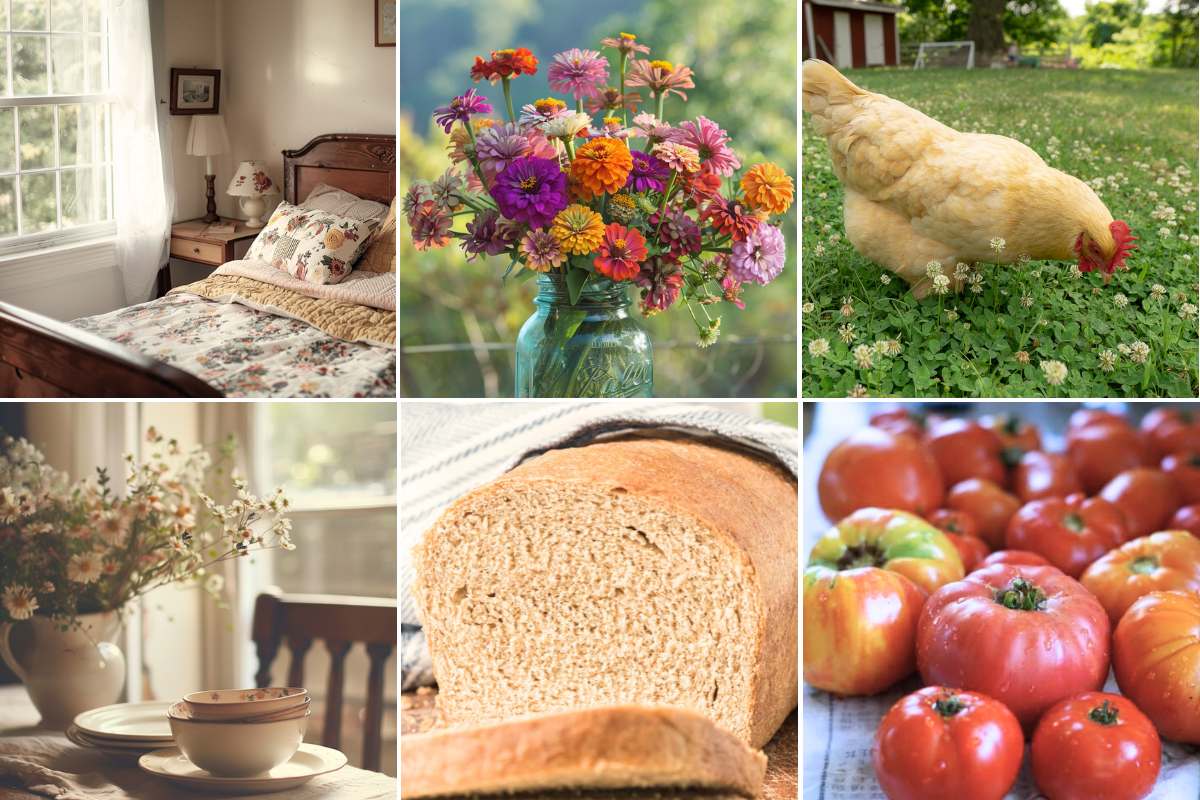
Sure, a package of sliced bread can feel like the best thing since…you know. But once you’ve watched dough rise in a pretty bowl on your countertop and brushed a browned loaf with butter that you pulled out of the oven, you’ll realize that convenience isn’t everything.
heirloom homemaker email course
A 5-day series straight to your inbox to help you create a beautiful home life.
No logins, no guilt, no overwhelm.
Promise.
I promise to keep your email address safe. Unsubscribe at any time
These vintage skills are still useful today, wherever you live. I hope you find a few that interest you and get started.
1. Start a Vegetable and Cut Flower Garden
Decades ago, all homes had vegetable gardens, even city homes. Fresh produce was expensive to buy, homes were on larger lots, and growing your vegetables just made sense.
Today food is less expensive to buy, and we have less time and space. Gardening is currently enjoying a resurgence, but many people are likely to try it and give it up or see it as a hobby.
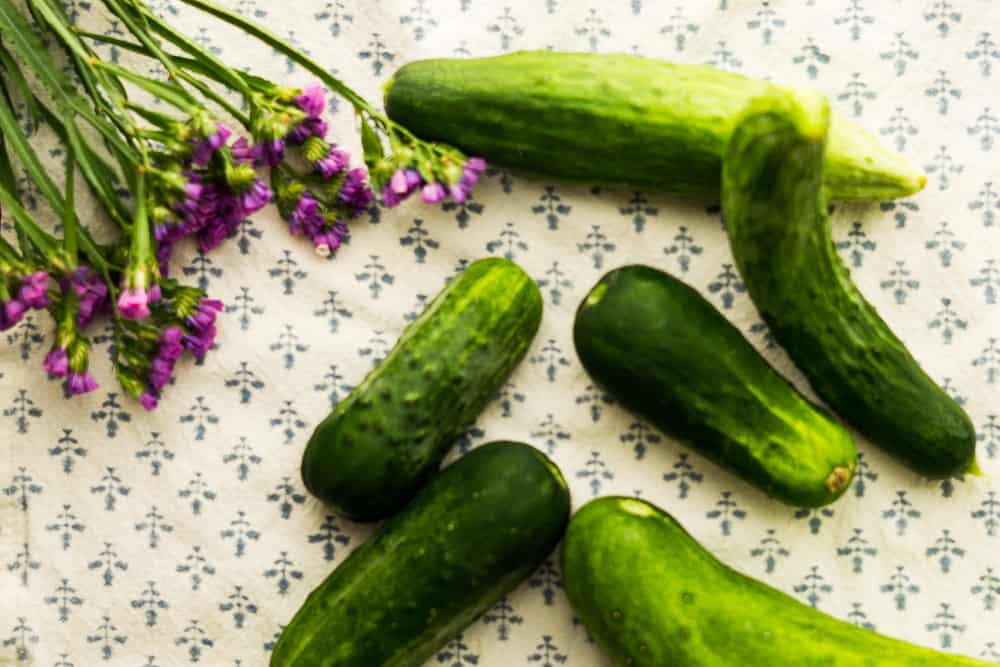
For the old-fashioned homemaker, keeping a home garden was a given. That doesn’t mean that everyone was living off the land! Absolutely not. But vegetable gardens were expected to supplement the family’s diet and help save a little money.
It is debatable whether gardening still saves money. But as food prices increase, it seems more and more valuable, and it’s a skill that you have to build over time. Why not start small and learn what you can?
Don’t forget about growing cutting flowers as well, which are the perfect way to give your house charm and coziness in the spring and summer. It’s like growing your own decor. No more seasonal junk.
If you have any amount of outdoor space at all, gardening is a worthy activity. Everyone can have a few herbs in pots at least.
2. Preserve Seasonal Food
Hand in hand with gardening is preserving the harvest. Canning, dehydrating, and other ways to preserve food will help you save money and feel productive,
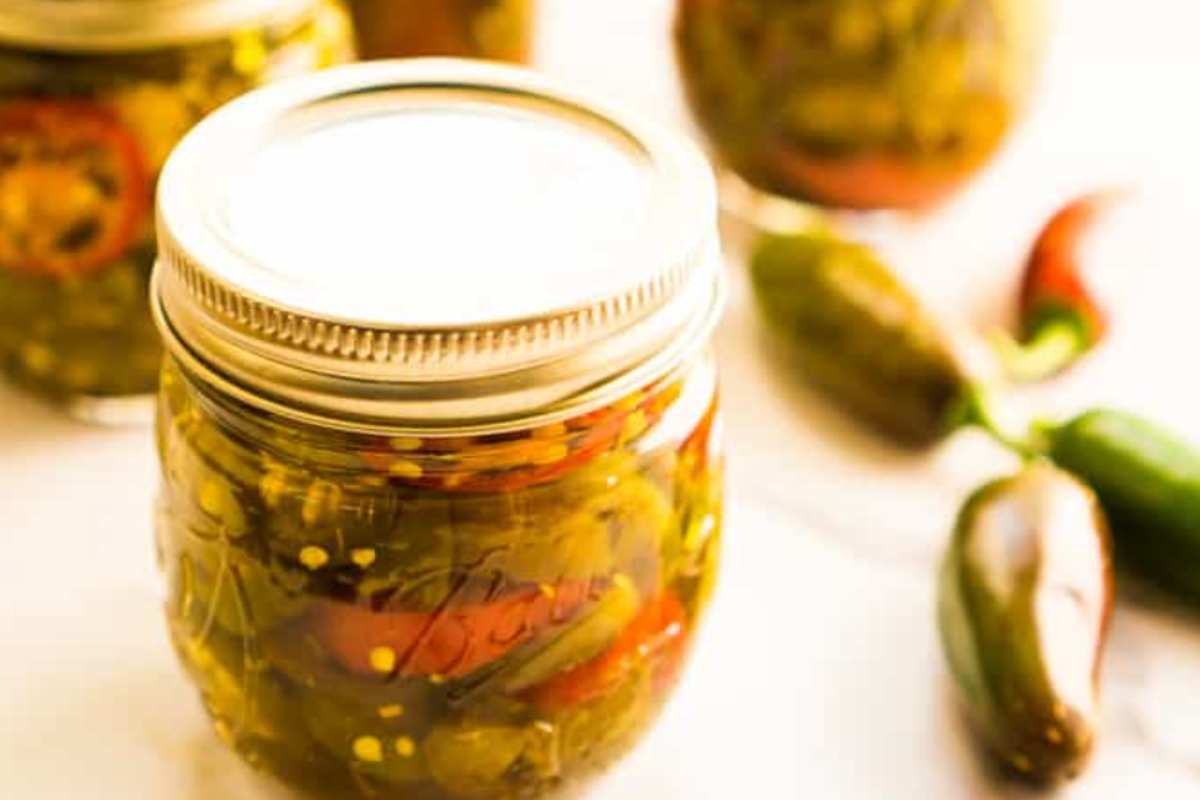
Even if you don’t garden, you can preserve food. (Remember Blueberries for Sal and the mother going foraging for wild blueberries to can?) You can frequent farmer’s markers, ask friends for produce, and even preserve grocery store items. This can actually be very cost-effective when you buy good sale prices on foods you really eat.
Even though canning is one of the most important traditional homemaking skills, make sure you are using modern resources for canning recipes and techniques. A lot has changed over the years in terms of best practices for canning, and many old-fashioned recipes are no longer considered safe, unfortunately.
3. Bake Your Own Bread
Baking bread is one of the best things on this list because anyone can do it. Homemade bread is so much better than store-bought and it definitely saves money.
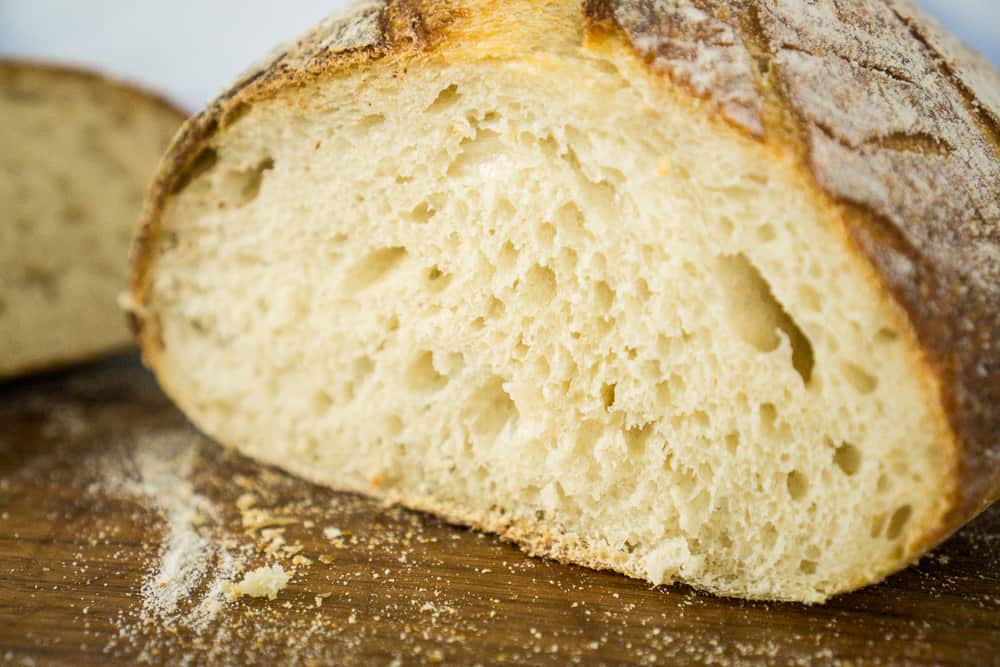
Even though it takes quite a bit of time to bake bread, most of it is hands-off time and it can easily be fit into the rhythm of your day. Bread baking is something that has become much easier with modern inventions like bread machines and instant yeast.
But it is good to know how to do it without any of these things too. Once you get used to yeast breads, branch out into sourdough and kneading by hand. They are timeless skills that help you reduce your dependence on store-bought supplies and become a more frugal homemaker.
4. Cook From Scratch (Everything, But Especially Dinner)
Old-fashioned homemakers did not have the luxury of any mixes or pre-made meals. Everything was made from scratch out of necessity. But keep in mind that most meals were very simple (like beans and cornbread for dinner simple).
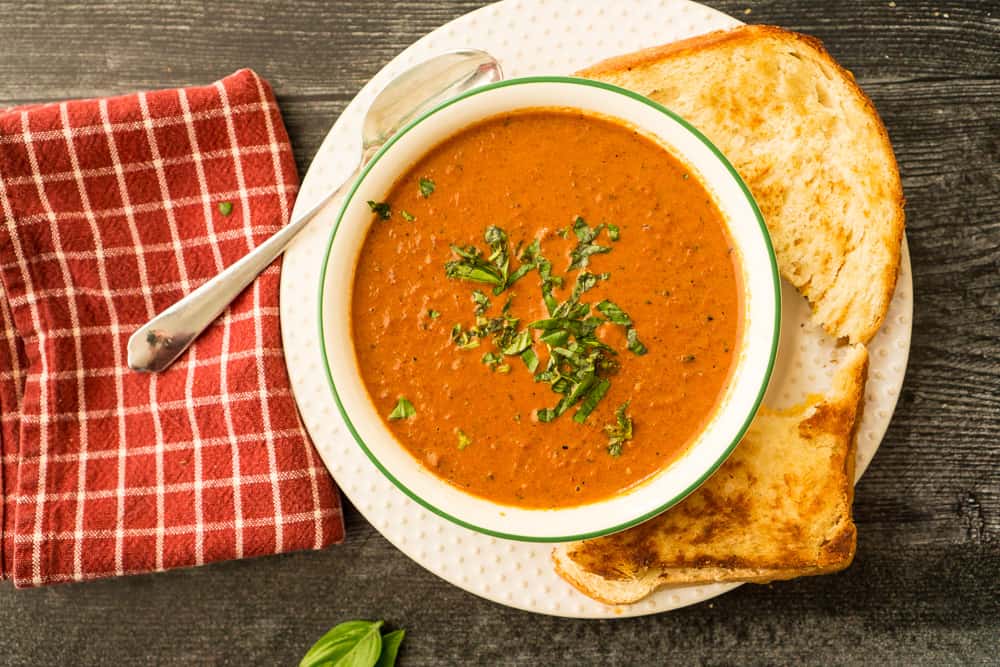
When you transition to cooking everything from scratch, it’s best to get there slowly. First, stop buying expensive things, like fully prepared meals. Then, give up boxed mixes and instant side dishes. Then, work up to making even more things yourself, like mayonnaise and spice mixes (if you want to!).
Now, this doesn’t mean you can’t use modern conveniences. If you have a deep freezer, slow cooker, or pressure cooker, take advantage of them!
5. Learn to Plan Ahead
Running a household has a lot of moving parts. And often, we get so caught up in the details of day to day work, like picking up toys and making dinner, that we forget bigger picture items.

In the past, most women did not plan elaborate events or vacations, but their day-to-day life followed a routine, as did their weeks. And they were always planning for what was coming up. A century ago, if a family had a lot of money, this might be the only task of the homemaker, and everything else was done by servants!
Think of the term “managing” the home. That’s what this is. Thinking about what is needed, ahead of time, and being ready.
Don’t forget to plan downtime for yourself and your family as well.
6. Sew Basic Household Items
I have attempted sewing many a time but am terrible at it. I’ve managed to make a few pillow covers and curtains, and there’s nothing like admiring your own handiwork (even when it isn’t perfect!).
Sewing does not save you much money, if any, unless you are very clever about reusing fabric and getting deals. But it’s such a satisfying and productive hobby! And if you really think about why clothing and other fabric goods are so inexpensive, it is definitely worth the effort and expense to make nicer quality, longer-lasting things.
7. History Keeping
Don’t forget about this, as it is one homemaking skill that will outlive you, long after every loaf of bread is eaten. In the past, homemakers were able to simply save photographs, letters, and the family Bible. Every photograph and letter was likely to be special.
But today, our homes are filled with junk papers and with so many things being digital, devoid of special photos and letters. So it’s our job to make memories and record history more consciously. Don’t just keep your pictures trapped on your phone, get them printed and hang them up!
Consider an easy journal with a few lines a day so that you have a real memento you can pass down.
8. Make Your Own Soap
This is one that people think is really weird! But it is so satisfying and simple that everyone should try it at least once.
Soap making might seem like an unusual skill, but it’s a surprisingly simple and satisfying craft that offers numerous benefits beyond just getting clean. Old-fashioned soap makers often utilized readily available ingredients like animal fats and wood ashes, crafting soaps that were gentle on the skin and uniquely tailored to their needs.
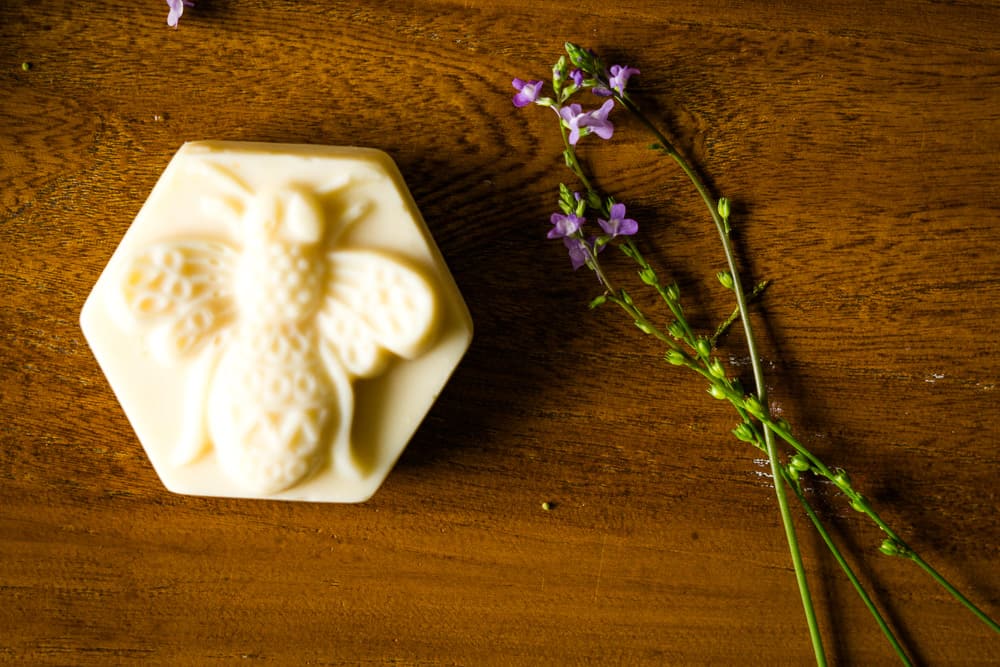
Today, soap making allows you to:
- Save Money: Handmade soap can be significantly cheaper than high-quality commercial soaps, especially if you buy ingredients in bulk or utilize foraged materials.
- Customize: You have complete control over the ingredients, allowing you to create soaps tailored to your skin type and preferences, whether that’s using goat milk for a creamy lather, essential oils for aromatherapy benefits, or natural colorants for visual appeal.
- Give Thoughtful Gifts: Handmade soap makes a unique and practical gift that shows you care. You can customize it for the recipient’s preferences, adding a personal touch.
Vintage vs. Modern Housekeeping
Of course, things are different today. Many women work outside the home and even stay at home moms have a lot of expectations related to their children’s school and activities.
These skills are not things that we can expect everyone to know and do regularly. But if you are feeling the need to look inward and pull in your sails a little, try mastering one of the things on this list.
And don’t forget to count your blessings and be content. Perhaps the most valuable skill of all.
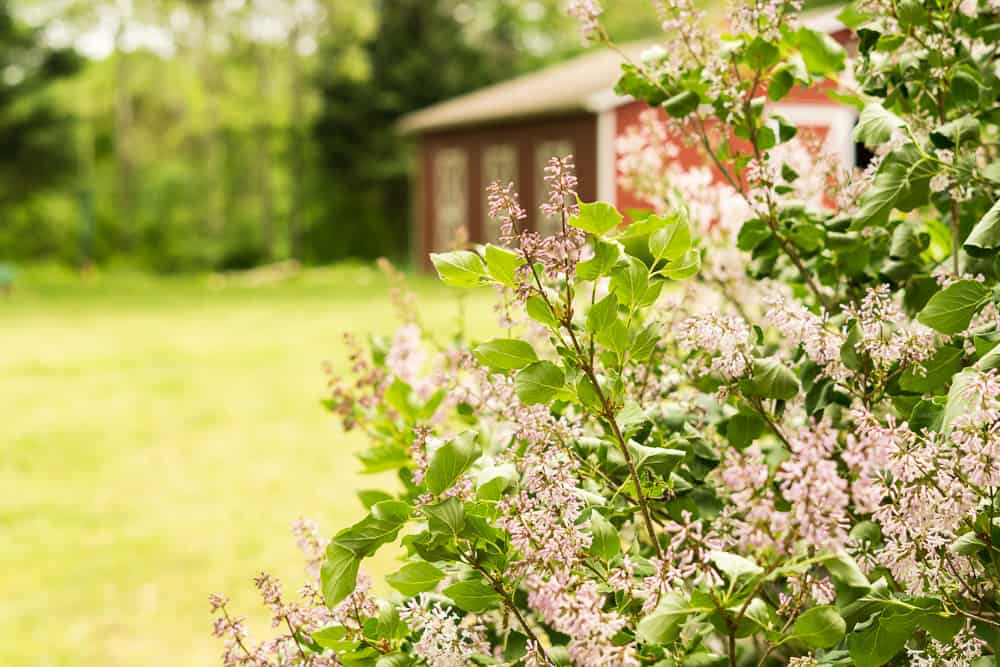
Love,











“Even SAHMs have a lot of expectations put on them…”
I have been feeling this so much lately. We’re expecting babies #10 & 11 in a few weeks. My maternal gma had 13 and my husband’s maternal gma had 11. I keep asking, “Did Grandma teach Youth Group, coach the kids soccer, act as Scout secretary?” No she didn’t, she took care of her family while Grandpa (both sides) ran the farms. But I *want* to help out, I just realistically cannot right now and then I’ll get asked a few more times and cave or feel terribly guilty for refusing.
I know what my priorities are and I’m really happy and content serving my family, but the outside pressures of what I *should* be doing feel even stronger lately.
I disagree that sewing doesn’t save money! Sewing doesn’t have to mean making your own clothes. The ability to hem a pair of pants to fit, fix a torn seam or sew on a button, or even customize something that you’ve bought second hand not only saves money because you aren’t just replacing things but it’s better for the environment.
I love that another benefit in all these things is that they are sustainable in a wasteful culture!
Thanks 😊
hi, I see your point! I guess I think of this as mending, not sewing.
I am 84 , believe it or not, I have been doing all the things listed for years. I still enjoy homemaking, my latest was making soap, I dearly love these wonderful E-mails. I pray God’s blessing on you. Thank you again for the wonderful posts.
thank you Mrs. G I love and appreciate you!
Thank you so much for your kind words! It’s wonderful to hear that you’ve been doing these things for so many years. Making soap sounds amazing! I’m so glad you enjoy the posts. Your prayers and blessings mean so much—thank you!
♥️♥️♥️♥️♥️♥️
Thank you Katie,
Sara Trout
Hey Sarah, I’m so glad you enjoyed the post. It means a lot!:)
Frankly, I am grandma. Yes, I do have 2 grandkids, but that is not what I am referring to. I bake a loaf of bread 2-3 times a week. Sure, I could freeze 1 or 2 loaves and only bake once a week. I simply enjoy the process I learned from my Mom. Right now MY 18 qt slow cooker is busy cooking chicken bones, skin, and fat into healthy broth. Every meal is from scratch. No need to worry about what might be added to a store bought meal because we only consume what I purposely put in. Sure, it takes time. I don’t spend hours watching TV, talking on the phone or mindlessly strolling through stores. At night I thank God for the day He gave us and pray for the ability to do it all over again tomorrow. It’s a good feeling.
I’ve learned to make my bread and butter. I also grew my own tomato and pepper plants. It was easy and fun!
I used to make butter but I couldn’t stand it! maybe I’ll try again 🙂
i couldn’t agree more…i am same age and do and think like you…bless you
Sewing , I think the same just dive right into a easy project. Mine will be a valance for the kitchen window. Fingers crossed 😊
Thank you so much for this post!! The part about history keeping really lit my fire and I instantly went and had pictures from clear back to 2013 printed and have started a smashbook. This has been something that’s bothered me for years(that all my pics were still digital) and your post inspired me to fix that. Thanks again!!